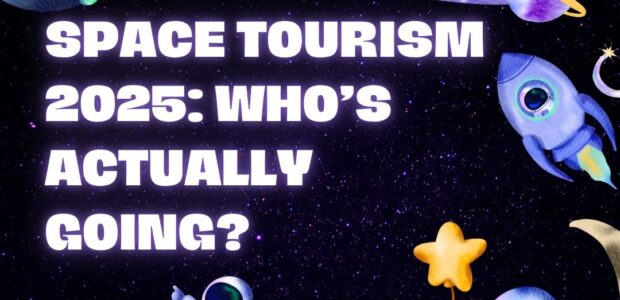Space Tourism 2025: Who’s Actually Going?
What once belonged only in science fiction is now boarding countdown. In 2025, space tourism is taking off—literally. With companies like SpaceX, Blue Origin, and Virgin Galactic leading the charge, the dream of ordinary people travelling beyond Earth’s atmosphere is becoming a reality. But it begs the question: who’s actually going to space in 2025—and who can afford it?
1. The New Astronauts: Wealthy Tourists and Tech Moguls
Right now, the majority of space tourists are ultra-wealthy individuals: billionaires, tech founders, crypto investors, and celebrities. Space travel is still incredibly expensive, with tickets ranging from $250,000 to over $50 million, depending on altitude, duration, and mission complexity. In 2025, we’re seeing influencers, business tycoons, and even actors among the early adopters.
2. Celebrities in Orbit
From reality stars to musicians, a growing number of celebrities are booking suborbital joyrides or low-Earth orbit stays for publicity and personal passion. Their presence helps normalise space travel while driving media buzz around this new form of luxury adventure.
3. Researchers and Citizen Scientists
Beyond the ultra-rich, some seats are being reserved for scientific research and educational missions. Organisations are sponsoring citizen scientists, educators, and students to conduct zero-gravity experiments, test wearable tech, or study human biology in space. These missions aim to make space more accessible and meaningful beyond just tourism.
4. Space Tourism Companies: What They Offer
-
Virgin Galactic offers suborbital flights with a few minutes of weightlessness and Earth views from the edge of space.
-
Blue Origin’s New Shepard also focuses on suborbital experiences with vertical launches and soft landings.
-
SpaceX provides the most advanced option—orbital and lunar missions aboard its Dragon and Starship spacecraft, lasting days or even weeks.
5. Training Before Takeoff
Even as a tourist, going to space isn’t as simple as boarding a plane. Travellers must undergo physical and mental preparation, including simulations, zero-G flights, and emergency training. Some programs require weeks of conditioning; others just a few days.
6. Costs, Packages, and What’s Included
The 2025 offerings vary in price:
-
Suborbital flights (3–10 minutes in space): ~$250,000–$500,000
-
Orbital missions (1–3 days): $20M–$50M
-
Luxury space stays (planned): Future space hotels like Orbital Assembly promise multi-day stays in rotating habitats.
Packages typically include training, accommodation pre-launch, mission suits, and post-flight experiences like media interviews or space clubs.
7. Future Accessibility
While 2025 is dominated by elites, long-term projections suggest falling prices. With reusability improvements and more providers entering the market, space tourism could become more affordable within a decade—potentially opening access to adventurous middle-class travellers, contest winners, or students.
Conclusion
In 2025, space tourism is still in its early (and expensive) stages, but momentum is building. The passengers today are the pioneers—paving the way for a future where space travel could become a part of mainstream adventure tourism. Whether you’re a billionaire, a scientist, or just a dreamer, one thing’s for sure: the final frontier is closer than ever.


